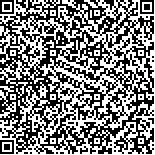下载中心
优秀审稿专家
优秀论文
相关链接
摘要

尺度问题是遥感科学研究的一个关键科学问题,但其理论和方法的发展严重受限于稀缺的多尺度观测数据。黑河生态水文遥感试验(HiWATER)的核心目标之一是开展多尺度观测以支持尺度转换研究。本文综述了HiWATER中定点观测的尺度上推研究进展,内容包括:(1)尝试严格定义了空间平均、空间尺度上推、观测足迹、代表性误差、观测真值等概念;(2)介绍了HiWATER获取的多尺度(单点-像元-区域-流域)生态水文观测数据;(3)发展了基于地统计理论的多尺度采样方法,改进了基于时间稳定性的采样方法;(4)定量评估了辐射、碳通量、土壤水分、地表温度单点观测的代表性误差,实证了异质性地表遥感产品真实性检验的不确定性主要来源于观测的时空代表性;(5)发展了定点观测的尺度上推方法,将克里格方法推广至回归克里格、面到面、不等精度观测等情形,发展了贝叶斯框架下的非线性尺度上推方法,实证了引入遥感观测作为协同信息可显著提高尺度上推的精度。总之,HiWATER初步形成了从采样设计、多尺度观测、代表性误差的度量、尺度上推新方法到真实性检验的研究框架。
The scale issue in quantitative remote sensing is a significant challenge that comprises three major problems that need to be addressed:(1) the forward modeling of remote sensing signals for heterogeneous land surfaces, (2) the parameter inversion for heterogeneous land surfaces, and (3) the upscaling of in situ observation for the validation of remote sensing products. This study focuses on the third problem by reviewing the progress of upscaling research in the Heihe Watershed Allied Telemetry Experimental Research (HiWATER). First, we define several basic concepts associated with scaling on the basis of the probability space and data assimilation theory. These concepts include spatial average, spatial upscaling, footprint scale, pixel scale, point scale, representativeness error, observation truth, and validation threshold. Second, we introduce the multiscale observation platform of HiWATER and multiscale observation data, which covers the scales from point to pixels, sub-basins, and the whole river basin. Third, we describe several new developments in the sampling design based on geostatistics and temporal stability analysis. Specifically, a hybrid model-based sampling method without any spatial autocorrelation assumptions is developed to optimize the distribution of eco-hydrological wireless sensor network nodes, a universal coKriging model is proposed to optimize multivariate sampling design, and a stratified block kriging is used to optimize the sampling locations in a spatial heterogeneous area. The temporal stability analysis is improved for the selection of the representative sampling points of the albedo and leaf area index. The stratified temporal stability analysis is proposed to identify the representative sampling points for monitoring long-term soil moisture at the pixel scale in high-intensity irrigated agricultural landscapes. Fourth, the representativeness of the in situ observation of solar radiation, carbon flux, soil moisture, and land surface temperature is evaluated. Results showed that the uncertainty of the validation for remote sensing products in heterogeneous areas mainly comes from the spatial and temporal representativeness of in situ measurements. Fifth, several upscaling methods are developed. The Kriging method is extended to block regression Kriging, area-to-area regression Kriging, spatiotemporal regression block Kriging, and unequal accuracy block Kriging for upscaling the in situ observation from the point-scale or footprint-scale to the pixel scale. Additionally, several case studies show that the Bayesian maximum entropy, a nonlinear method, is capable of providing a generalized theory framework to fuse general knowledge (such as that obtained from a model) and specific knowledge (such as that obtained from direct and indirect observations). The usefulness of high-resolution remote sensing data as auxiliary information in improving the accuracy of upscaling is verified in this work. Overall, the multi-scale observation data collected in HiWATER are helpful in improving our understanding of remote sensing scale problems.

